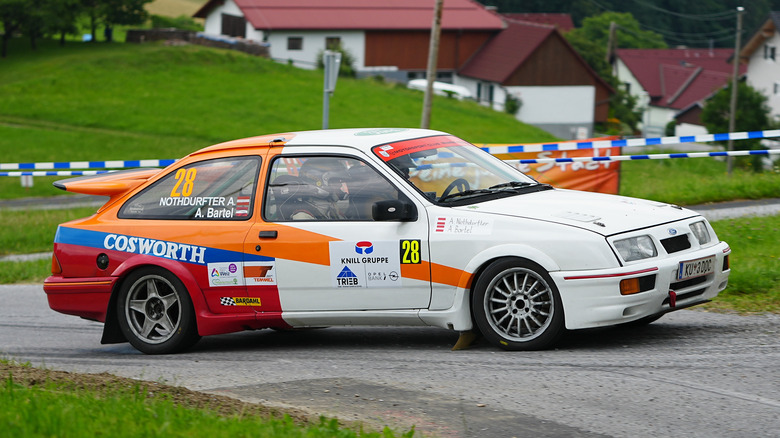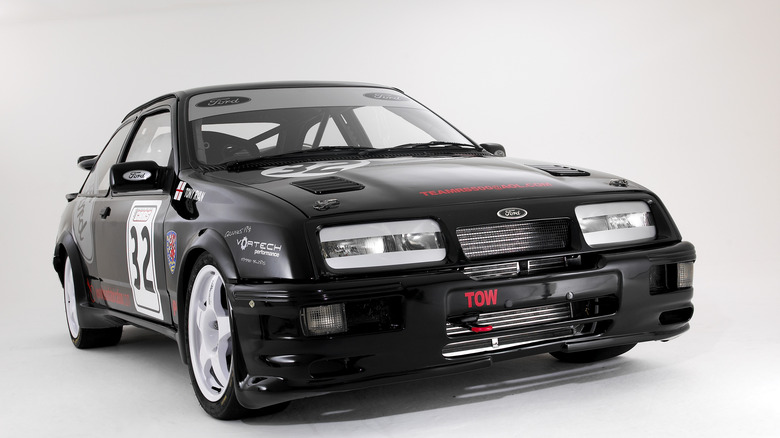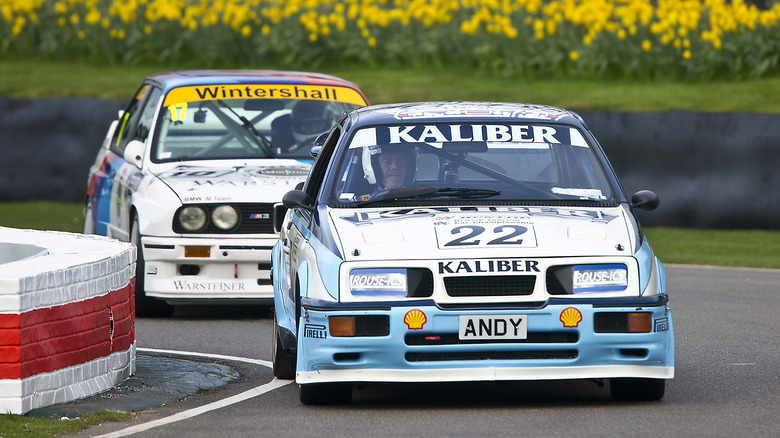The Slick Rare Ford We Wish Would Have Made It To The USA
As rally enthusiasts will know, homologation is a key concept for races. Rally, by definition, will typically involve traversing stretches of public road, so the drivers' vehicles naturally need to be legal for that particular road system. Indeed, only road-legal cars can be entered in rallies. Per the World Rally Championship Specifications, vehicles in World Rally must be hand-built and based on a car model that had a production run of no less than 2,500.
This has meant only one thing over the years: Several models of powerful (within the boundaries of the WRC regulations) vehicles are available in very limited quantities. Such cars can be collectors' and enthusiasts' dreams; one particular Ford vehicle is a perfect example.
The Ford Sierra RS Cosworth is a stylish machine indeed, and the envy of many U.S. petrolheads who never saw it launch in their region. Let's take a closer look at this stylish European rally competitor. Ford may have had some car flops in the past, but this isn't one of those times.
Ford's Sierra Cosworth enters the scene
Ford's position as rally race heavyweights, emphasized by the success of the Ford Escort RS1600 and RS1800, had suffered after the closure of after the closure of the company's Advanced Vehicle Operations (AVO) division, which had created these models. In the 1980s, Ford Motorsport (European division) tried to ensure a return to the top. It would need vehicles that fit the bill to put this in effect. Among them was the Sierra Cosworth.
The Sierra RS arrived on the scene in 1986, attempting to balance the blend of performance and affordability that is the vital sweet spot for vehicle sales. At £16,000 (approximately $19,600) at the time, drivers got a package with a T.03b turbocharger crafted by Garrett, a Garrett AiResearch T3, and a hefty YB engine, significant bang for their buck. In terms of performance, it offered a respectable 201bhp and a 375 bhp race trim.
In order to be eligible for rally racing, 5,000 model sales were required. It achieved just that early in 1987, and work began on the RS500, which Cosworth would soup up to a staggering 500bhp (204bhp on the road). Mike Moreton writes in "Rallye Sport Fords: The Inside Story" that this was achieved through extraordinary additions: "Twin fuel injectors and revised cylinder-head ports were part of the list, as was a bigger capacity oil pump and better cooling from a larger water pump and radiator. A bigger crankshaft damper would also be needed because of the extra vibration."
The life and legacy of the Sierra Cosworth and Cosworth RS500
MotorSport Magazine declares the RS500 "the greatest racing car of all time." This is lofty praise indeed, but in terms of raw victories, it checks out: 84.6% of the car's races, according to the publication, resulted in a win. The production model may not boast the same level of performance (as it wouldn't), but it's a unique rarity with an impressive pedigree, and a Ford offering like no other.
As a result of all of these traits, the car remains highly desirable. In February 2023, the U.K.'s. Race Retro Show held a very special event: the auctioning of one of those RS500s by Silverstone Auctions. It was in fine condition, sporting original components, and an astonishing collector's piece. It ultimately sold for an incredible total of £596,250 (approximately $732,664).
Any limited-production item, of course, will attract a lot of attention. This is true for everything from action figures to smartphones. The sheer appeal of this triumph of a Ford makes it a legendary rally car.


